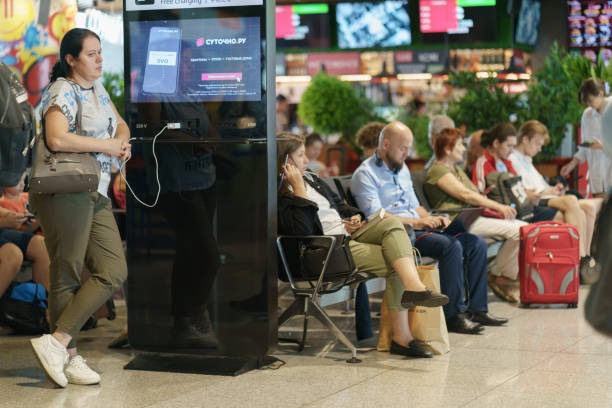Introduction
In today’s digitally interconnected world, maintaining internet access is crucial for communication, work, and staying informed. However, during unexpected blackouts, traditional means of connectivity may fail, leaving individuals helpless without access to essential online services. In this guide, we will talk about various strategies and solutions to ensure uninterrupted internet access even during power outages. From temporary measures like mobile hotspots to DIY solutions like solar-powered setups, we’ll provide you practical advice to help you stay connected to the internet during a blackout.
Understanding the Problem
Causes of Blackouts
Blackouts can occur due to different reasons such as severe weather conditions like hurricanes, tornadoes, or snowstorms, equipment failure, or infrastructure issues. Regardless of the cause, the result is the same—a loss of electricity, disrupting all devices dependent on it, including routers and modems.
Impact on Internet Connectivity
During a blackout, traditional wired internet connections are rendered useless as the infrastructure relies on continuous power supply. This disruption can be particularly problematic during emergencies when access to information and communication is vital for safety and coordination.
Preparing for a Blackout
Creating a Blackout Kit
Essential Items to Include
You need to prepare a blackout kit that must contain essential items such as flashlights, batteries, candles, matches, non-perishable food, bottled water, and a first aid kit. Also, keep the kit in a designated location that is easily accessible to all members of your household.
Stocking Up on Food, Water, and Supplies
In anticipation of a blackout, stock up on non-perishable food items, canned goods, and bottled water to sustain your household during the outage. Additionally, make sure you have an ample supply of essential supplies such as medications, toiletries, and hygiene products.
Backup Power Solutions
Generators
Consider investing in a portable generator to provide backup power during extended blackouts. Generators can keep essential appliances running, such as refrigerators, heaters, or medical devices, and help maintain comfort and convenience until power is restored.
Uninterruptible Power Supplies (UPS)
For smaller-scale blackouts or brief interruptions, consider using uninterruptible power supplies (UPS) for sensitive electronic devices like computers, routers, and modems. UPS units provide temporary battery backups to prevent data loss and equipment damage.
Protecting Your Home
Securing Windows and Doors
Moreover, make sure that windows and doors are properly secured during blackouts to prevent unauthorized access and protect your home from intruders. Consider installing sturdy locks, reinforcing entry points, and using blackout curtains to maintain privacy and security.
Using Alternative Lighting Sources
In addition to flashlights and candles, invest in alternative lighting sources such as battery-operated lanterns, solar-powered lights, or rechargeable LED lamps. These options provide reliable illumination during blackouts and reduce dependence on traditional lighting sources.

Communication Planning
Establishing a Communication Plan
Develop a communication plan with your family members or household occupants to ensure everyone knows what to do in the event of a blackout. Designate a central meeting place, establish alternative methods of communication such as text messages or walkie-talkies, and keep emergency contacts updated.
Keeping Emergency Contacts Updated
Maintain a list of emergency contacts, including utility providers, local authorities, and neighbors, and keep this information readily accessible. Ensure that all household members are familiar with emergency contact numbers and procedures to facilitate communication during blackouts.
Temporary Solutions
During a blackout, immediate access to the internet becomes crucial for communication, information retrieval, and emergency coordination. While restoring the primary power source is the ultimate goal, implementing temporary solutions can bridge the gap and provide essential connectivity during the outage. Here are some temporary solutions to consider:
1. Mobile Hotspots
Using mobile hotspots from smartphones or dedicated devices can offer temporary internet access during a blackout. Most smartphones have a built-in feature that allows them to function as a hotspot, sharing their cellular data connection with other devices. This option can be particularly useful for essential tasks requiring internet access.
A pro Tip: If you want to know more about the latest mobile hotspots, you can check our guide for that.
2. Public Wi-Fi
In urban areas, public Wi-Fi networks may still be operational during a blackout, especially in locations such as libraries, cafes, or community centers. While not as reliable as home internet connections, public Wi-Fi can provide temporary access for urgent communication or information retrieval.
3. Satellite Internet
Satellite internet services remain operational even in remote areas or during emergencies when traditional options fail. While installation costs may be higher, satellite internet can offer reliable connectivity during blackouts, ensuring uninterrupted access to essential online services.
4. Community Networks
In some communities, residents may collaborate to establish temporary networks during blackouts. This can involve sharing internet connections, setting up community hotspots, or utilizing mesh networking technologies to extend connectivity to affected areas. Community networks foster solidarity and mutual support during emergencies.
5. Emergency Response Services
Emergency response services, such as those provided by government agencies or relief organizations, often deploy temporary communication solutions during disasters or blackouts. These may include mobile command centers equipped with satellite communication systems or temporary internet hubs to facilitate coordination and information dissemination.
6. Wireless Routers with Battery Backup
Wireless routers equipped with battery backup capabilities can maintain internet connectivity for a limited time during a blackout. These routers draw power from built-in batteries or external power banks, allowing continued access to the internet until primary power is restored.
7. Cable Tethering
For individuals with access to a cable internet connection and a compatible device, cable tethering can provide temporary internet access during a blackout. This involves connecting a device, such as a laptop or tablet, to the internet via a physical cable connected to a modem or router.
8. Emergency Data Plans
Some internet service providers offer emergency data plans designed to provide temporary access during outages or disasters. These plans may include increased data allowances, reduced throttling, or discounted rates during emergency situations, ensuring continued connectivity for subscribers.
9. Public Charging Stations
In addition to internet access, maintaining device power is essential during a blackout. Public charging stations, available in locations such as airports, train stations, or shopping malls, can provide a lifeline for individuals needing to recharge their devices to stay connected.
10. Portable Wi-Fi Devices
Portable Wi-Fi devices, such as MiFi routers or pocket-sized hotspots, offer on-the-go internet access and can be invaluable during blackouts. These devices use cellular data networks to provide connectivity, offering a convenient solution for staying connected when traditional services are unavailable.

| Call 866-861-4084 for Internet Deals |
DIY Solutions
When facing a blackout, implementing do-it-yourself (DIY) solutions can provide sustainable and reliable alternatives to traditional methods of accessing the internet. These DIY solutions leverage renewable energy sources and innovative technologies to ensure continued connectivity even in the absence of grid power. Here are some DIY solutions to consider:
1. Solar-Powered Setups
Harnessing solar energy to power your internet setup is an eco-friendly and sustainable solution during blackouts. You can install solar panels on your property and connect them to a solar charge controller and battery bank. The stored energy can then be used to power your modem, router, and other essential devices, providing uninterrupted internet access for extended periods.
2. Wind-Powered Generators
For locations with consistent wind patterns, wind-powered generators can serve as an alternative energy source during blackouts. DIY enthusiasts can construct small-scale wind turbines using readily available materials and install them on their property. The generated electricity can be stored in batteries and used to power internet equipment during outages.
3. Pedal-Powered Generators
Pedal-powered generators offer a human-powered solution for generating electricity during blackouts. By connecting a bicycle to a generator, individuals can generate electricity through pedal power. This DIY setup can be particularly useful in emergencies, allowing individuals to pedal to generate power for charging devices or powering internet equipment.
4. Hydroelectric Systems
For properties with access to flowing water, DIY hydroelectric systems can provide a renewable energy source for powering internet equipment during blackouts. By constructing a small-scale hydroelectric generator using a water wheel or turbine, individuals can harness the power of flowing water to generate electricity and ensure uninterrupted connectivity.
5. DIY Battery Backup Systems
Building a DIY battery backup system can provide a reliable source of power during blackouts. DIY enthusiasts can assemble battery banks using recycled lithium-ion batteries or deep-cycle batteries and connect them to inverters to convert stored energy into usable AC power. This setup can power internet equipment and essential devices during outages.
Community Solutions
Creating Neighborhood Networks
Collaborating with neighbors to establish a community network can provide mutual support during emergencies like blackouts. By sharing resources such as backup power sources, internet access points, and information, communities can enhance their resilience and connectivity, ensuring that everyone stays connected and informed during crises.
Sharing Resources
Pooling resources such as generators, solar panels, and mobile hotspots within a community can ensure widespread access to the internet during blackouts. This cooperative approach fosters solidarity and strengthens community bonds, demonstrating the power of collective action in overcoming challenges.
Conclusion
In conclusion, staying connected to the internet during blackouts is essential for communication, accessing vital information, and coordinating emergency response efforts. By implementing a combination of preparedness measures, temporary solutions, and community-driven initiatives, individuals and communities can ensure uninterrupted internet access even in the face of power outages, contributing to overall resilience and safety.
FAQs (Frequently Asked Questions)
Can I use a UPS for my internet router during a blackout?
Yes, a UPS can provide backup power to your router and modem, allowing continued internet access for a limited time. However, the duration of backup power depends on the capacity of the UPS and the power consumption of your devices.
How long does a mobile hotspot last during a blackout?
The duration of a mobile hotspot’s battery life varies depending on usage and device specifications. It’s advisable to conserve data and use it only for essential tasks during emergencies to prolong battery life.
Is satellite internet reliable during blackouts?
Yes, satellite internet is designed to remain operational even during power outages, making it a reliable option for maintaining internet connectivity during emergencies. However, weather conditions or equipment issues may affect performance.
Are there any safety considerations when using portable generators for internet access?
Yes, it’s crucial to follow safety guidelines when using portable generators, including proper ventilation and avoiding carbon monoxide exposure. Ensure generators are placed outdoors and away from living spaces to prevent accidents.
How can I contribute to community resilience efforts for blackout preparedness?
You can contribute to community resilience efforts by participating in local emergency preparedness programs, sharing resources with neighbors, and advocating for infrastructure upgrades to enhance resilience. By working together, communities can better prepare for and respond to emergencies.

Meet Jennifer Harper, a wordsmith extraordinaire who has been shaping the digital landscape with her creative prowess for the past two years. Not just a content writer; she is a storyteller who brings the content to life. Her passion for internet trends, memes, and the ever-evolving world of entertainment is evident in every piece she creates. Jennifer doesn’t just follow trends; she sets them.